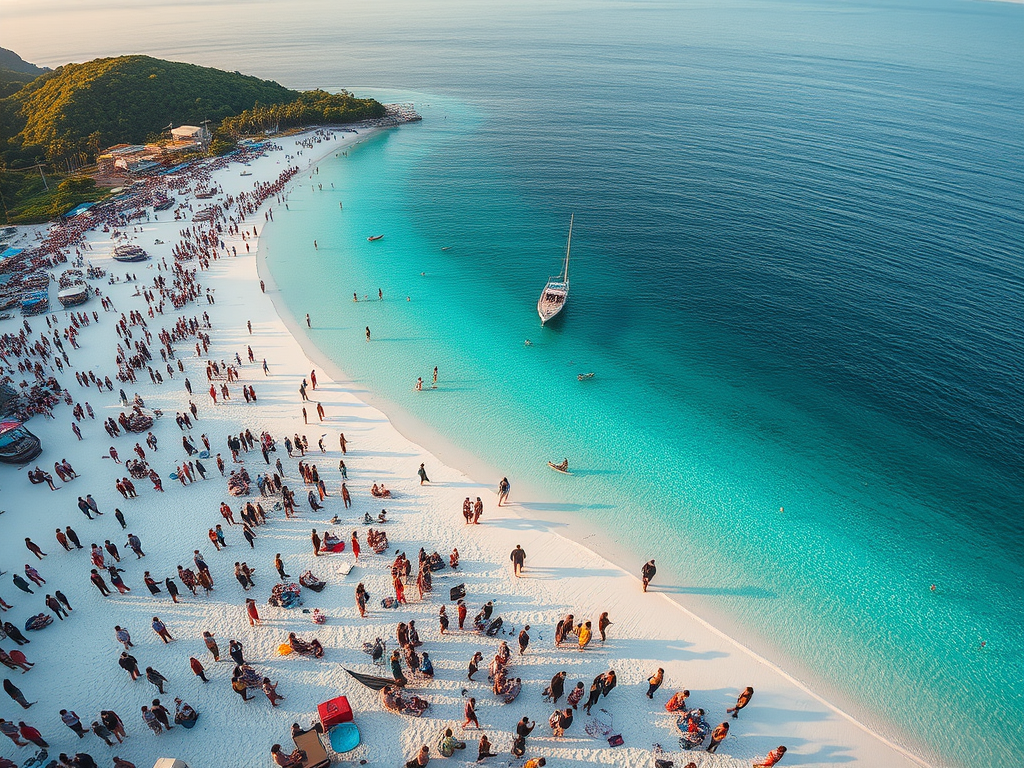Tourism in the Philippines has long been a double-edged sword. While it drives economic development and promotes cultural heritage, unregulated tourism has too often led to the degradation of our most beautiful destinations. The closure of Boracay Island in 2018 shocked the world—but for those of us who have been studying tourism sustainability, it was a long-overdue wake-up call.
Boracay was once the crown jewel of Philippine tourism—powdery white sand, turquoise waters, and a festive atmosphere that welcomed millions. But it became a victim of its own popularity. Unchecked resort development, leaking sewage, poor solid waste management, and uncoordinated policy enforcement brought the island to the brink of environmental collapse.
The government’s drastic six-month closure of Boracay was not just a clean-up operation—it was a landmark decision signaling the emergence of authorities as a driving force in tourism management. As I wrote in People, Planet, Profit, “There are many other destinations in the exploration and development stages, but Boracay has become the template for development with lessons learned, addressed, and hoped to be avoided in the future.” The shutdown allowed for environmental recovery, infrastructure repair, and the imposition of stricter environmental compliance across stakeholders.
But this action also sparked a broader question: How can we prevent another Boracay from happening?
The Answer Lies in Carrying Capacity
Tourism carrying capacity refers to the maximum number of visitors a destination can accommodate without causing unacceptable ecological, social, or economic damage. It’s not just about counting heads—it’s about identifying and maintaining the delicate balance between use and preservation.
As noted in our chapter, early definitions of carrying capacity emphasized numerical limits. However, more evolved frameworks, such as those proposed by McCool and Lime (2001), highlight the importance of determining “acceptable or desirable conditions” of use, which incorporate social and environmental quality, not just numbers.
This is where stakeholder interaction becomes critical. Authorities must coordinate effectively with tourism businesses, tourists, and local communities. Each player must contribute to achieving a sustainable balance. The local government must enforce regulations, businesses must invest in responsible operations, communities must be involved in decision-making, and tourists must behave ethically.
In fact, in our case dynamics matrix, we argue that sustainable tourism is only possible when all four key players act in harmony. It’s not a matter of who is more important—it’s a matter of how their interactions define the boundaries of sustainable development.
Boracay as a Cautionary Tale
Boracay’s experience illustrates what happens when these interactions fail. Prior to its closure, the island had no clear carrying capacity framework. There was poor coordination among national and local authorities, and the private sector had little incentive to comply with environmental standards. Worse, the local community, who stood to lose the most from tourism’s decline, was often left out of the conversation.
During the shutdown, that changed. Environmental standards were enforced. Zoning rules were tightened. Businesses had to comply with sewage and building regulations. More importantly, conversations around tourist limits, waste management, and preservation became mainstream.
And yet, many still doubted the necessity of such an extreme measure. Some feared the impact on employment and local incomes. Others asked whether the island would ever be the same. But I always go back to a core idea: We doubt the earth’s ability to heal, but what we are really afraid of is our own extinction. Nature has an incredible capacity for regeneration—if only we give it a chance. The bigger threat is our unwillingness to change.
Applying Carrying Capacity to Emerging Destinations
Now that Boracay has served as a “reset,” how do we ensure the same fate doesn’t befall rising tourism sites like Siargao, El Nido, Bohol, or even lesser-known gems like Romblon or Gigantes Islands?
The answer is proactive planning. The tourism area life cycle theory (Butler, 2011) teaches us that destinations move through stages—exploration, development, growth, maturity, and decline. The earlier we plan, the better we can avoid crisis.
For emerging destinations, setting carrying capacity doesn’t mean turning tourists away—it means determining what kind of tourism is desirable, how much infrastructure is needed, how many visitors local resources can support, and how residents feel about sharing their home with outsiders. These decisions must be rooted in community consultation, scientific data, and adaptive management.
There is also room for creativity. Some sites can attract “quality tourists” with higher purchasing power and greater environmental consciousness. Others may opt for controlled ecotourism, maximizing the cultural value of immersive experiences over sheer numbers. As shown in Jurado et al. (2013), sociodemographic profiling can help shape customized tourism strategies aligned with each site’s strengths.
A New Paradigm for the Philippines
Sustainable tourism is not anti-tourism. It’s about better tourism. In a country blessed with natural wonders, but often hampered by weak enforcement and fragmented planning, we must rethink our strategies.
Authorities must stop acting only when damage is irreversible. Businesses must stop valuing short-term gains over long-term viability. Tourists must stop seeing destinations as mere backdrops for Instagram. And communities must stop being passive beneficiaries and start being active custodians.
When each sector plays its role and respects the carrying capacity of a destination, we unlock tourism’s true potential—not just as an engine of profit, but as a mechanism for protecting the planet and empowering people.
The Boracay story should no longer be a recurring chapter—it should be the prologue to a new narrative in Philippine tourism. One that is wise, respectful, inclusive, and future-focused.
Because in the end, sustainability is not about keeping nature alive—it’s about keeping us alive.
Excerpt from:
Cortez, M. A. A. (2022). Theoretical perspectives on the emerging roles of key players in setting tourism carrying capacity: Philippine case study. In People, Planet, Profit: Principles and Practices of Sustainable Tourism (Chap. 14). Asian Institute of Management – Dr. Andrew L. Tan Center for Tourism & De La Salle University Publishing House.
webpage exclusive, download the complete book chapter below:

Leave a Reply